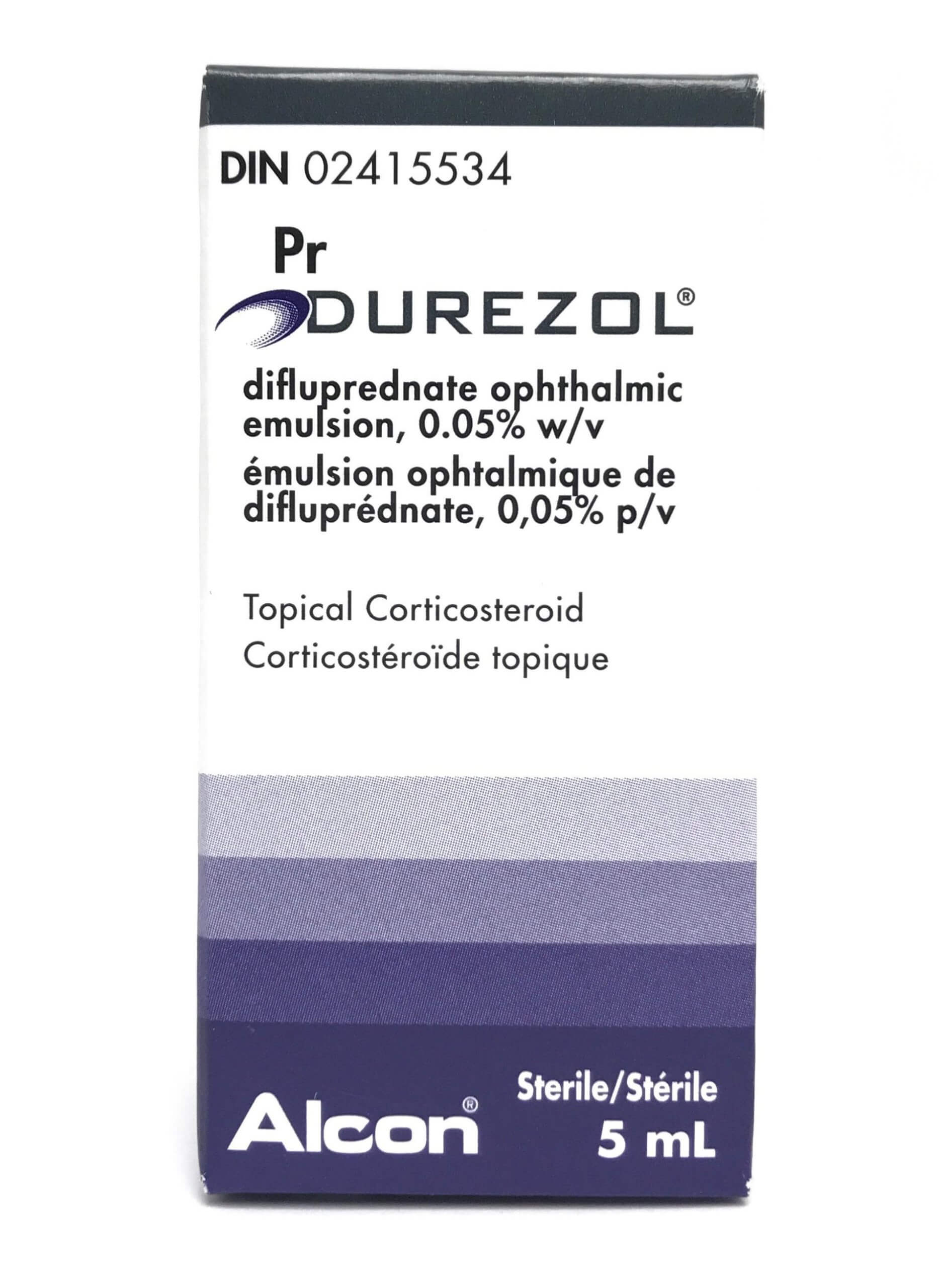Durezol (generic name: difluprednate) is a prescription eye drop mainly used to treat inflammation and pain associated with eye surgeries.
Difluprednate reduces inflammation, redness, swelling, and irritation in the eye. The corticosteroid blocks the body’s inflammatory response, relieving the pain and swelling that can follow eye surgery. Durezol is also prescribed to treat anterior uveitis, an inflammation of the middle layer of the eye (uvea).
Durezol can also be recommended for other inflammatory eye conditions as determined by a healthcare provider. The emulsion formulation ensures the drug is evenly distributed across the eye’s surface. Unlike most other suspension eyedrop formulations, Durezol can be applied without shaking before use.
Doctors frequently prescribe other medications, as well as Durezol, immediately after
cataract surgery, including
Pred Forte and
Tobradex. Tobradex is an antibiotic and steroid ophthalmic ointment used to prevent and treat bacterial infections and inflammation of the eyes.
Surveys have shown that
more than 97% of ophthalmic surgeons prescribe topical corticosteroids like Durezol for post-surgery treatment of their patients.
Dosage
Patients should always follow their healthcare provider’s instructions.
The typical dose of Durezol for post-operative inflammation is one drop in the affected eye(s) four times daily, starting 24 hours after surgery and continuing for two weeks. The dosing schedule for uveitis or other inflammatory conditions can vary depending on the patient’s specific condition and other health problems.
Storage
Store Durezol away from the reach of infants and children in temperatures between 15°C and 25°C (59°F to 77°F). Keep the bottle tightly closed when not in use and out of bright light. Please read our friendly tips about
handling medicine safely.
Common questions
What should I do if I miss a dose?
If you miss a dose of Durezol, apply it as soon as you remember. If it is close to the time of your next dose, skip the missed dose and continue with your regular schedule. Do not double up on doses to make up for a missed one.
Are there any activities I should avoid while using Durezol?
Patients using Durezol may experience blurred vision temporarily after application. It’s advisable to avoid driving or operating heavy machinery until clear vision is restored.
Can Durezol cause increased eye pressure?
Yes, Durezol may increase intraocular pressure, which can lead to glaucoma. Your healthcare provider may monitor your eye pressure while you’re using
Durezol, especially if you’re on the medication for an extended period.
This text is for informational purposes only. Please consult a doctor or pharmacist before using any medication.
Read the information leaflet that comes with the medication.
Most people who use Durezol do not experience any adverse side effects. Doctors prescribe this medication because they assess the benefits of such treatment outweigh any likely unwanted effects.
Some of the side effects that have been reported include:
- Temporary blurred vision after application
- Eye discomfort or irritation
- Sensitivity to light
- Increased tear production
Not all side effects are listed here. If these or other unlisted symptoms persist or worsen, consult a healthcare provider or pharmacist.
Durezol is FDA-approved for the treatment of:
- Post-operative ocular inflammation and pain: Common symptoms treated include redness, swelling, and discomfort in the eye.
- Anterior uveitis: Uveitis is an inflammation of the uvea, the middle layer of the eye. Symptoms include eye pain, redness, light sensitivity, and blurred vision.
Symptoms of these conditions often include eye redness, pain, swelling, and irritation, which can affect vision and comfort.













